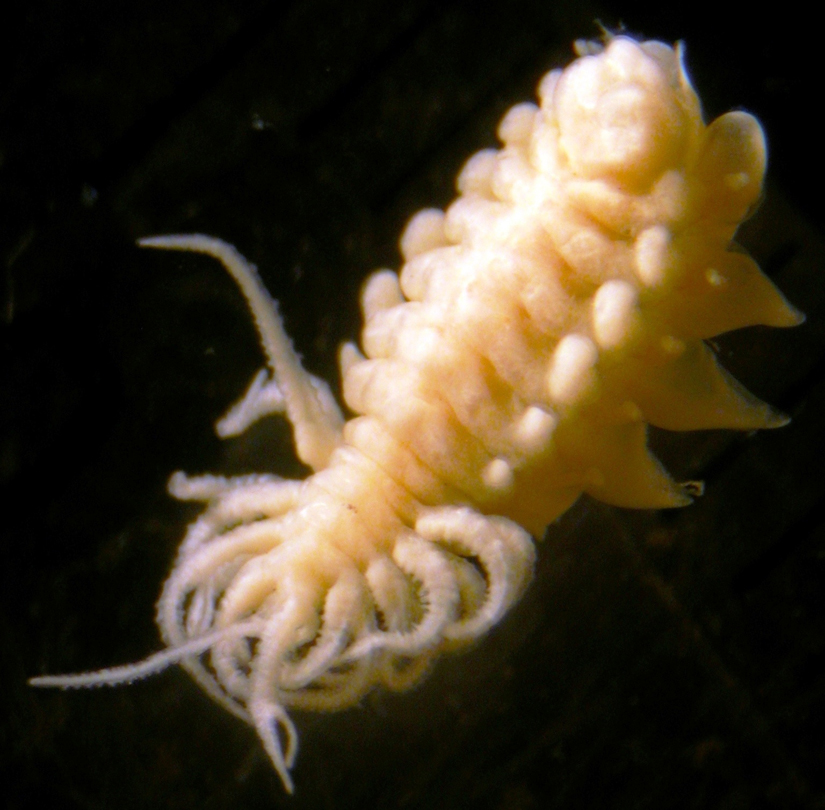


Scientists at UC Santa Barbara and other institutions say their new research is expected to profoundly affect the field of ecology and can assist the management of ecosystems, including forests, lakes, and oceans. And it's all because of parasites.
The research, published this week in the journal Science, includes parasites in a comprehensive study of ecosystems. By doing so, the scientists say they have revealed new ecological rules.
"The major finding of our research is that all types of animals –– parasites or otherwise –– appear to follow exactly the same rule for how common they are," said Ryan Hechinger, lead author and associate research biologist with the Marine Science Institute at UCSB.
"This includes birds, fishes, insects, crabs, clams, and all the parasites that live inside and on them," said Hechinger. "They all seem to follow the same rule. And the rule is simple. You can predict how common an animal is just by knowing how big an individual is and how high in the food chain it is."
Hechinger explained that body size is important because it determines how much food an animal needs. A given amount of food supports fewer big animals than small animals because each big animal needs more food. The food chain is important because the higher an animal is in the food chain, the less food there is and, therefore, the less common that species is.
According to the scientists, they did something no one has previously done: They went into an ecosystem and paid attention to parasites, treating them as equal players with other animals. "We realized that despite being small, parasites feed high up the food chain and might break the rule that smaller animals are more common," said co-author Kevin Lafferty, ecologist with the U.S. Geological Survey at UCSB.
The data were collected at three estuaries in Southern California and Baja California. The researchers counted and weighed parasites and other animals before documenting that parasites were indeed less common than other small animals.
"Paying attention to parasites was central to the study," said co-author Armand Kuris, professor of zoology at UCSB. "Parasites are at least half of all biodiversity. And they are different in some very basic ways than other life forms. However, ecological science usually ignores them. How can we possibly understand how life works if we don't look at half of the species –– the parasites?
"Considering parasites helped us find the right theory, see the true patterns in nature, and better test the theory," Kuris said. "In addition to body size, the general rule for animal abundance must factor in the food chain and let both small and large animals be top consumers."
The scientists also discovered a second general rule: that the amount of biomass produced by a population does not depend on the body size of the animals in the population, or on what type of animal –– bird, fish, crab, or parasite.
"If this rule is general, it means an aphid population can produce the same amount of biomass as a deer population," said Lafferty. "Furthermore, tapeworms that feed on the deer population produce less biomass than the deer, but can produce the same as a mountain lion population that also feeds on the deer."
"Predicting animal abundance is one of the most basic and useful things ecological science can provide for management and basic research," said Hechinger. "This simple rule helps with that because it may apply to all life forms and can easily be applied to complex ecosystems in the real world."
Additional co-authors include Andy Dobson of Princeton University and the Santa Fe Institute, and James Brown of the University of New Mexico.
The research was partly funded by the joint National Science Foundation-National Institutes of Health's Ecology of Infectious Diseases program.
† Top photo: This parasitic isopod, which is related to rolley pollies, is one of the larger parasites encountered by the researchers in the estuaries. The isopod is almost one centimeter long, and was found infecting a crab, which it had "parasitically castrated," completely blocking the host's reproduction.
Credit: Ryan Hechinger
†† Middle photo: This conceptual figure indicates how body size and the food chain jointly influence the abundance and production of animal populations. At any particular food chain height (trophic level), bigger animals are less common than smaller animals, and the amount of biomass produced by an animal population per year does not depend on body size. But, the loss of resources among trophic levels (indicated by trophic transfer efficiency) causes both big and small animals to be less common and less productive the higher up the food chain one goes.
Credit: Ryan Hechinger
††† Bottom photo: Armand Kuris (left), Kevin Lafferty (front), and Ryan Hechinger
Credit:
George Foulsham, Office of Public Affairs, UCSB
Related Links



